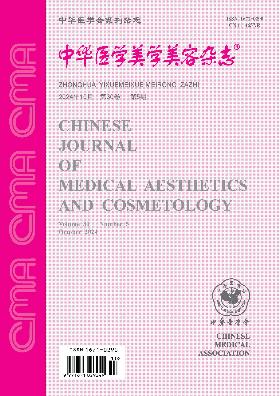Clinical application of autologous auricular cartilage in nasal tip plasty
引用次数: 0
Abstract
Objective To observe and discuss the application and clinical effect of different forms of ear cartilage in nasal tip plasty. Methods Auricular cartilage was used to prune it as " halberd" shape at first, and then the extended transplantation and the cartilage fornix reconstruction were carried out by using single or combined septum cartilage. Meanwhile, nasal tip plasty was performed by using " cap shape" or " shield shape" cartilage grafting. Results 136 patients were followed up for 6 to 24 months after operation. 119 cases were satisfied, accounting for 87.5%, of which 11 cases (ear cartilage weakness) were not improved obviously, accounting for 8%. However, there were only 6 cases with the unsatisfactory feedback as the nasal tip that was decreased by 1~2 mm one year after the operation, accounting for 4.41%. Conclusions The auricular cartilage is pruned as " halberd" shape singly or combined with septal cartilage as an extended graft, reconstructing the cartilage fornix in the meantime, which is the way better than the traditional way of making nasal tip plasty to obtain the ideal nasal tip protrusion. Key words: Rhinoplasty; Ear cartilage; Autografts; Halberd shape; Cartilage fornix reconstruction自体耳廓软骨在鼻尖整形术中的临床应用
目的观察和探讨不同形态耳软骨在鼻尖成形术中的应用及临床效果。方法先用耳廓软骨修剪成“戟”形,然后用单一或组合的隔软骨进行扩大移植和软骨穹窿重建。同时,鼻尖整形术采用“帽状”或“盾状”软骨移植。结果136例患者术后随访6~24个月。满意119例,占87.5%,其中11例(耳软骨无力)改善不明显,占8%。但仅6例患者术后1年鼻尖缩小1~2mm,占4.41%,这是一种比传统的鼻尖成形术更好的方法来获得理想的鼻尖突起。关键词:鼻整形术;耳软骨;自体移植物;戟形;软骨穹窿重建
本文章由计算机程序翻译,如有差异,请以英文原文为准。
求助全文
约1分钟内获得全文
求助全文
来源期刊
自引率
0.00%
发文量
4641
期刊介绍:
"Chinese Journal of Medical Aesthetics and Cosmetology" is a high-end academic journal focusing on the basic theoretical research and clinical application of medical aesthetics and cosmetology. In March 2002, it was included in the statistical source journals of Chinese scientific and technological papers of the Ministry of Science and Technology, and has been included in the full-text retrieval system of "China Journal Network", "Chinese Academic Journals (CD-ROM Edition)" and "China Academic Journals Comprehensive Evaluation Database". Publishes research and applications in cosmetic surgery, cosmetic dermatology, cosmetic dentistry, cosmetic internal medicine, physical cosmetology, drug cosmetology, traditional Chinese medicine cosmetology and beauty care. Columns include: clinical treatises, experimental research, medical aesthetics, experience summaries, case reports, technological innovations, reviews, lectures, etc.

 求助内容:
求助内容: 应助结果提醒方式:
应助结果提醒方式:


